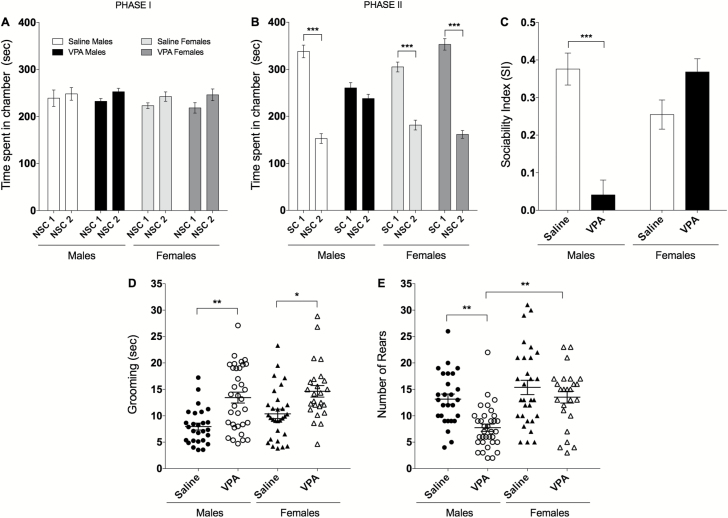Figure 3.
Valproic acid (VPA) prenatal treatment induced core symptoms of autism spectrum disorder (ASD) mainly in males. (A–C) Social behavior analysis. VPA males (n=27/34), saline males (n=10/27), VPA females (n=16/25), and saline females (n=15/30). Data are expressed as mean±SEM; 2-way ANOVA followed by Tukey’s posthoc were performed (*P<.05, **P<.01, ***P<.001). (A) Social interaction was assessed using the 3-chambers test. None of the treatment groups showed preference to any of the chambers during the 10-minute habituation (PHASE I). (B) VPA prenatally treated male mice spent less time in the social chamber and more time in the nonsocial chamber relative to controls, (C) they also show a significant decrease in sociability index. (D–E) Grooming and rearing behavior. VPA males (n=34/34), saline males (n=27/27), VPA females (n=25/25), and saline females (n=30/30). (D) VPA mice presented repetitive behavior and (E) a significant decrease in rearing exploratory behavior. Data did not follow a normal distribution and was analyzed using a non-parametric test (Kruskal-Wallis) followed by Dunn’s multiple comparison test.

